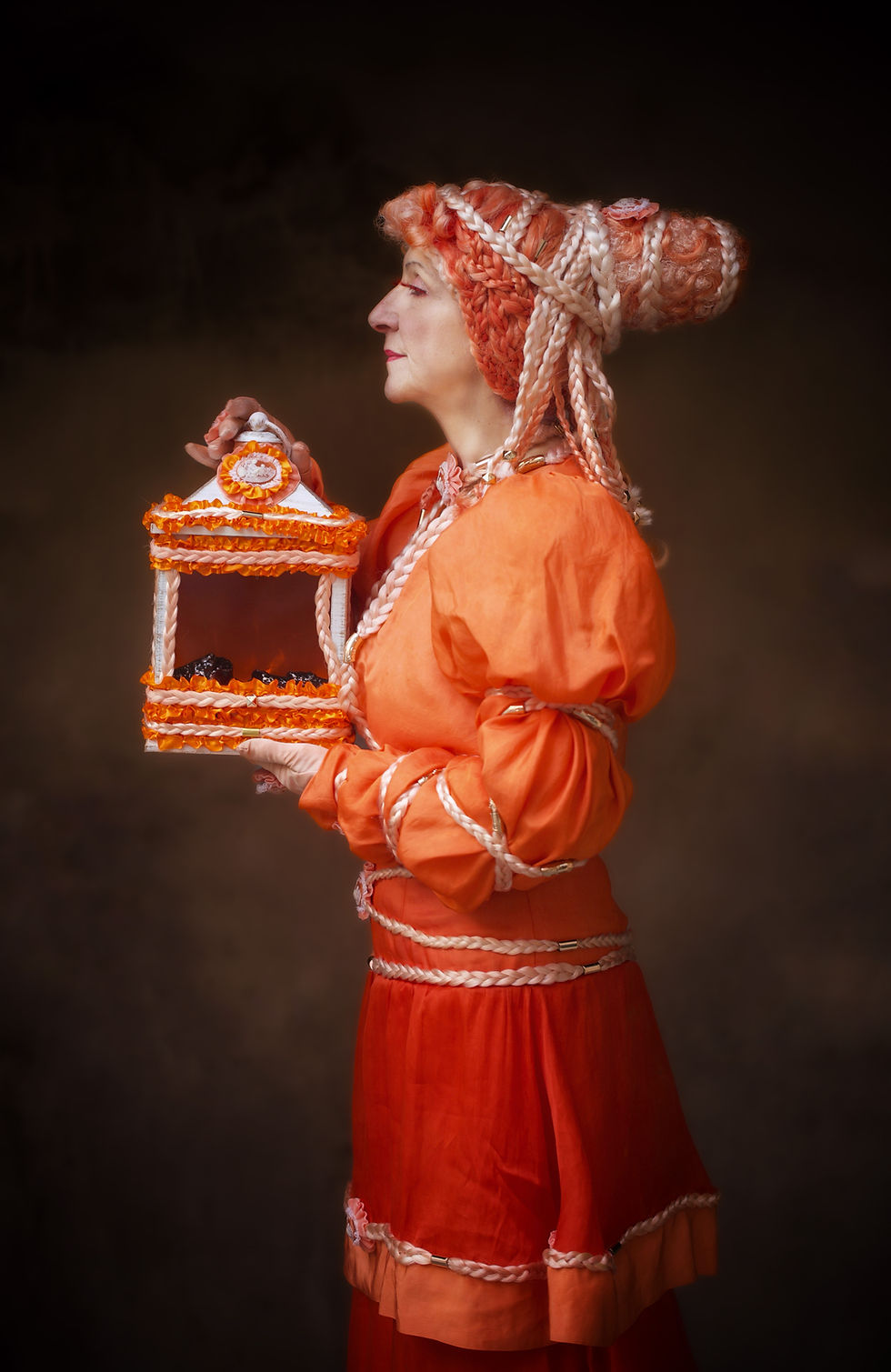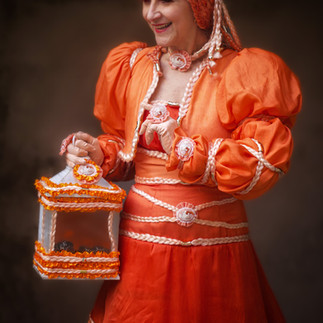Sacerdotessa Custode del Fuoco Sacro 聖火守護者女祭司
- Robin Yong

- May 12
- 4 min read



Vesta la Sacerdotessa, custode del Fuoco Sacro
Avvolta nel suo manto in meditazione, intreccia le sue consacrazioni e le affida all' universo...e le rende Sostanza scolpendole nel Cammeo .
Facendosi così Portatrice di Valori - Storie - Segreti
Dress the Priestess, guardian of the Sacred Fire
Wrapped in her mantle in meditation, she weaves her consecrations and entrusts them to the universe...and makes them Substance by carving them in the Cameo.
Thus becoming the Bearer of Values - Stories - Secrets



In the book Res Gestae Divi Augustus, also known as "The Deeds of the Divine Augustus," Augustus exhibits his piety by declaring that he was a member of the Pontifices, Augures, Quindecemviri, and Septemviri, the four main priesthoods in Rome. However, even the devout emperor himself was prohibited from attending one Roman religious college. This was the College of the Vestals, also called Vestal Virgins, and it was exclusively for women. One significant organization that contributed to Rome's safety and well-being was the College of the Vestals. One of the most significant duties of the Vestal Virgins, who served as priestesses of Vesta, the goddess of the hearth, was to keep the Temple of Vesta's sacred fire going.
The Eternal Flame and the Silent Servants: Unraveling the Mystery of the Vestal Virgins
For over a thousand years, the Vestal Virgins held a unique and powerful position in ancient Roman society. Shrouded in ritual, bound by strict vows, and wielding significant influence, these women were far more than just keepers of a flame. They were guardians of Rome's very survival, their chastity believed to be intrinsically linked to the city's prosperity and divine favor.
The cult of Vesta, the goddess of hearth, home, and family, predates the founding of Rome itself. Tradition places its origins in Alba Longa, with Romulus, the legendary founder of Rome, establishing the temple and the first Vestal Virgins in his new city. The sacred fire, eternally burning in the Temple of Vesta, symbolized Rome's lifeblood and continuity. Extinguishing it, whether accidentally or deliberately, was considered a dire omen, portending disaster for the Republic.
Choosing and Training a Vestal:
Becoming a Vestal Virgin was a prestigious undertaking. Chosen between the ages of six and ten, these girls had to be free of physical or mental imperfections and possess two living parents. They were usually selected from aristocratic families, further solidifying the Vestals' connection to the Roman elite.
The chosen girls were then inducted into a rigorous 30-year service, divided into three distinct stages:
Ten Years of Learning: During this period, the girls were educated in the complex rituals, prayers, and duties associated with Vesta. They learned to tend the sacred fire, purify the temple, and perform the necessary sacrifices.
Ten Years of Service: This was the heart of their duty, where they actively maintained the fire, performed the required rites, and participated in important religious ceremonies.
Ten Years of Teaching: In their final decade, the now-experienced Vestals instructed new initiates, passing down the traditions and secrets of the cult.
Privileges and Power:
Despite their vows of chastity, the Vestals enjoyed remarkable privileges and held considerable power within Roman society. They were independent from their fathers' control, could own property, and testify in court without an oath – their word was considered inviolable. They also had the power to pardon condemned criminals simply by encountering them. Their presence was highly respected, and they were often consulted on important matters of state.
Punishment and Perils:
However, living life under such intense scrutiny also came with significant risks. The most feared consequence was breaking their vow of chastity. A Vestal found guilty of this transgression faced a horrifying punishment: being buried alive in a sealed chamber with a meager supply of food and water, a symbolic return to the earth that had nourished Rome. Her seducer was publicly flogged to death.
The penalty for allowing the sacred fire to extinguish, even accidentally, was less severe but equally unsettling. The Vestal responsible would be flogged by the Pontifex Maximus, the chief priest of Rome.
The End of an Era:
The Vestal Virgins continued to play a crucial role in Roman society for centuries, surviving the transition from Republic to Empire. However, their influence waned with the rise of Christianity. In 394 AD, Emperor Theodosius I, a fervent Christian, ordered the dissolution of the Vestal cult and extinguished the sacred fire, marking the end of an era for these powerful and enigmatic women.
Legacy and Enduring Fascination:
While the physical reminders of the Vestal Virgins may be ruins and fragmented texts, their story continues to fascinate. They represent a unique intersection of religion, politics, and societal expectations in ancient Rome. Their dedication, their influence, and the harsh consequences they faced serve as a powerful reminder of the complexities of ancient Roman life and the enduring power of belief. The tale of the Vestal Virgins remains a compelling glimpse into a world where the fate of a nation rested on the shoulders of a select group of women, forever bound to the eternal flame.




With the advent of Christianity, the Vestal Virgin's time came to an end. During Theodosius I's reign, Coelia Concordia was the last known vestalis maxima, or "chief Vestal." This ancient Roman institution came to an end when Theodosius, a Christian, abolished the College of Vestals in 394 AD.


The Venice Carnevale is not solely about masks. Local Italians and an increasing number of foreign costumers now prefer historical costumes or painted faces. During Carnevale, the whole Venice becomes a real life theatrical stage, and many of these historical costumes carry deep perspectives...
Mary Cosmica is a veteran costumer at the Venice Carnevale. Her costumes are always very different from the other costumers. She is widely regarded by the Venetian community to be a real artiste.
As usual, the portraits are just done on the busy streets of Venice and using natural lighting only...It is not an indoor photo studio, there is no artificial lighting, flash or reflectors...With my costumed friends, we just take our street portraiture to an all new level....






























Comments